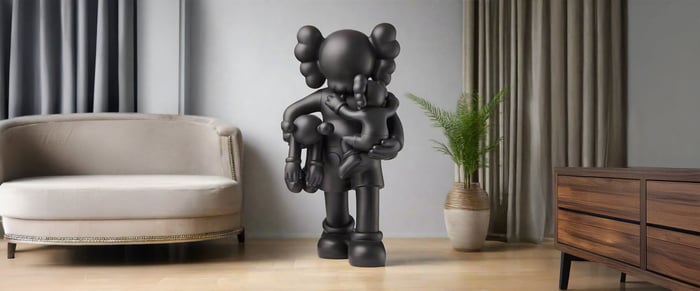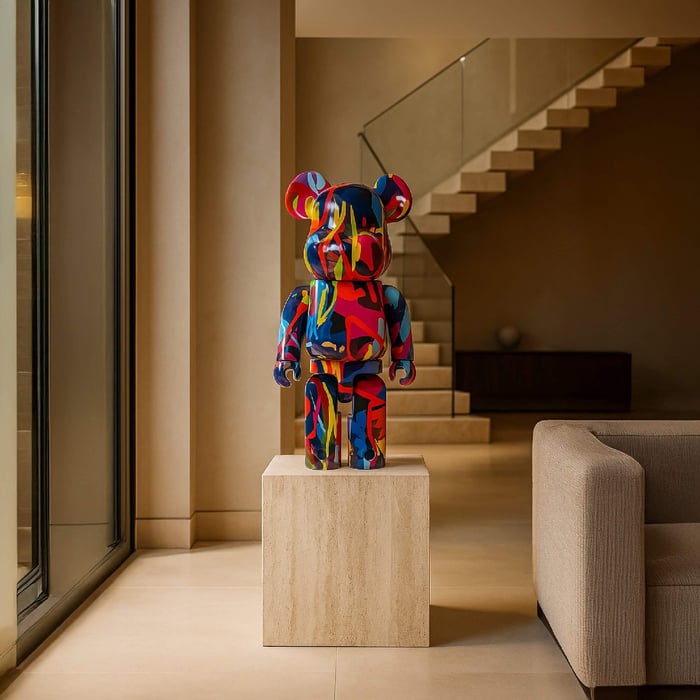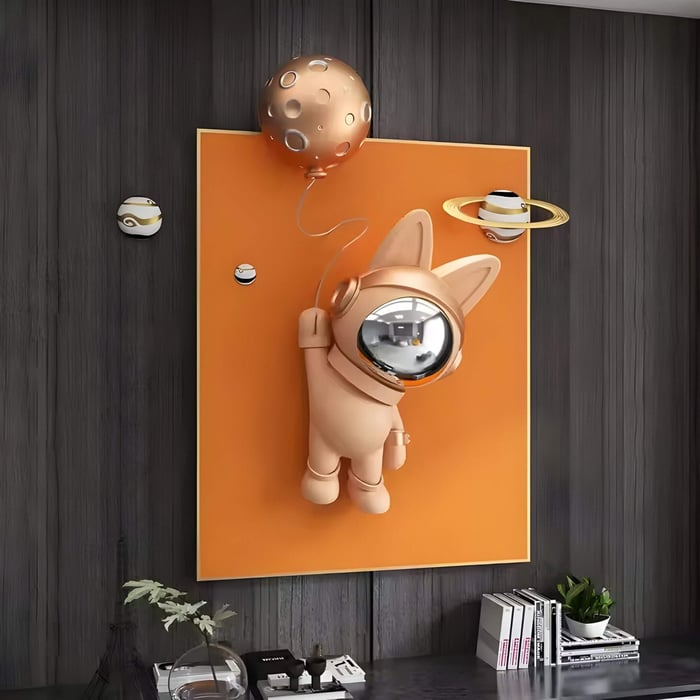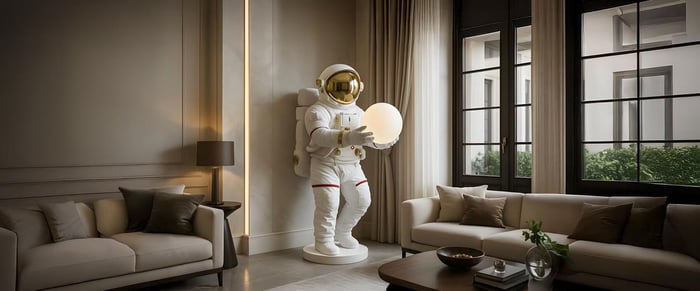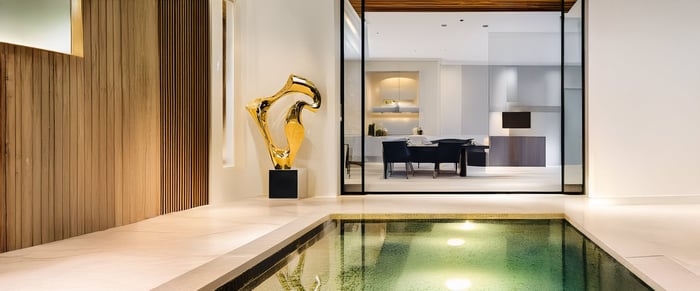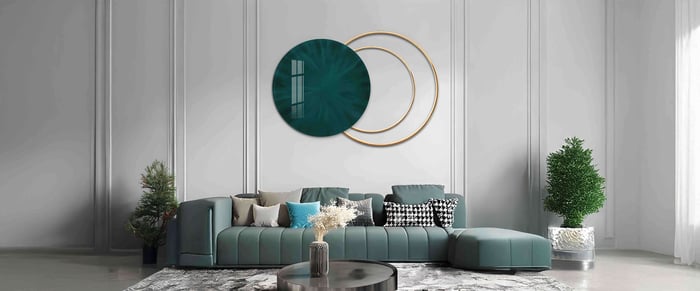Introduction: Why Indoor Sculptures Matter
Indoor sculptures aren’t just decorative extras, they shape the atmosphere of a space, alter its depth, and influence the way people move through it. The right piece can bring balance to a room, serve as a focal point, and reflect your personality or design vision. Whether you favour sleek, modern sculptures décor or intricate bronze sculptures, knowing how to choose and display them makes the difference between something that blends in and something that commands attention.
This guide answers the most common questions about indoor sculptures, from selecting the right style and material to placement, lighting, and care, so you can make informed decisions and enjoy your art for years to come.
FAQ 1 - What Indoor Sculpture Styles Work for Different Homes?
Different homes suit different art styles, and indoor sculptures offer endless variety.
Minimal & Modern – Clean silhouettes, geometric forms, and uncluttered designs work beautifully in contemporary spaces. A matte resin cube on a slim pedestal beside a glass wall can look striking without overwhelming the room.
Abstract & Contemporary – Expressive, unconventional shapes and mixed-media combinations are ideal for modern lofts or creative interiors, where they can act as conversation starters.
Figurative & Classical – Timeless representations of human or animal forms in bronze or marble offer elegance and familiarity, working well in more traditional or transitional interiors.
Organic/Biophilic – Sculptures with natural textures, wood grains, and flowing lines connect interiors to nature, softening sharp architectural edges.
Kinetic/Interactive – Moving or illusion-based works add playfulness and intrigue, perfect for a modern statement piece.
Pro Tip: Match sculpture style to your home’s architecture and colour palette to ensure it feels like a natural extension of the space.
FAQ 2 - Which Materials Should I Choose (and Why)?
Material choice impacts durability, style, and maintenance.
Bronze / Foundry Bronze – Heavy, enduring, and rich in patina over time. Perfect for classic or heritage-inspired spaces and great for high-traffic rooms where durability matters.
Resin / Bronze-Resin – Lightweight, affordable, and capable of fine detail. Practical for smaller sculptures or budget-conscious buyers, and easier to move when re-styling a room.
Stone (Marble, Travertine) & Wood – Organic warmth and individuality from natural veining or grain. Stone works well in formal interiors, while wood introduces softness and warmth.
Metals (Steel, Brass, Aluminium) – Sleek and reflective, great for modern or industrial interiors. Stainless steel sculptures bring a high-polish, contemporary edge.
Consider weight, finish, placement environment, and budget before deciding.
FAQ 3 - How Big Should an Indoor Sculpture Be?
Scale is essential. The sculpture and its base (if used) should feel proportionate to nearby furniture and wall space.
A common rule: if placing on a console or fireplace mantel, the sculpture should be about two-thirds the width of the furniture. Avoid pieces so small they “disappear” or so large they overwhelm the area.
Example: A 1.5m figure might be perfect beside a floor lamp in a large living room but overpower a compact hallway.
FAQ 4 - Where Should I Place Indoor Sculptures in Each Room?
Living Room – Flank a fireplace, place beside a media unit, or use a pedestal near a reading nook. Keep foot traffic clear.
Entry & Hallway – Tall, slender works draw the eye forward; a sequence of smaller sculptures on a console can create rhythm and a sense of arrival.
Dining Room – A single statement sculpture on a buffet or in a central niche works best.
Bedroom – Organic or calming pieces suit dressers or low plinths. Avoid sharp corners in walking zones.
Home Office – Tactile or kinetic sculptures can inspire focus without creating visual noise.
Pro Tip: Always think about sightlines - what’s the first thing someone sees when they enter? Sculptures work best when they anchor these visual focal points.
FAQ 5 - Pedestals, Shelves, or Tables: What Display Method is Best?
Plinths/Pedestals – Museum-like presence. The base should be about two-thirds the sculpture’s width and finished in a tone that complements the piece.
Credenzas/Consoles/Shelves – Layer with books or decorative bowls; stagger heights for depth.
Wall Niches/Ledges – Ideal for small bronzes, ceramics, or resin works. Adding subtle backlighting can make them glow.
Pro Tip: Ensure displays are tip-resistant and child/pet-safe. Felt pads under bases prevent surface damage.
FAQ 6 - How Do I Light Indoor Sculptures Without Glare?
Lighting is as important as the sculpture itself.
Use accent lighting aimed at a 30° angle to avoid glare.
Narrow spotlights reveal stone grain or metal sheen; wall washers suit tall pieces.
Dimmers adjust mood throughout the day.
Avoid prolonged direct sunlight to prevent heat damage or fading, UV window film can help.
Pro Tip: Warm light enhances wood and bronze tones, while cooler light sharpens the look of stainless steel and marble.
FAQ 7 - Care & Cleaning Basics by Material
Bronze/Bronze-Resin – Dust with a soft brush; wax occasionally to protect patina.
Stone/Wood – Dry dust; avoid moisture and chemicals; treat wood per finish instructions.
Resin/Painted Surfaces – Microfibre cloth only; avoid abrasives.
General rules: handle with clean dry hands, maintain steady humidity, and always lift from the base.
FAQ 8 - What’s the Difference Between Sculptural Art, Reliefs, and 3D Wall Pieces?
Freestanding Sculpture – Fully in the round, viewable from all angles.
Bas-Relief/High-Relief – Raised designs projecting from a background, merging art with architecture.
3D Art Panels – Repeating textures for large-scale decorative impact.
Choose based on available space, depth tolerance, and desired interaction level.
FAQ 9 - How Do I Build a Cohesive Collection Without It Feeling Random?
Pick a unifying factor:
Material (all bronze)
Colour palette (patinated greens, warm metallics)
Theme (animal sculptures, abstract motion, or organic forms)
Mix sizes for interest, but keep at least one dominant “hero” piece. Rotate periodically and keep notes on care requirements for each work.
FAQ 10 - Buying Tips: Originals vs Editions, Budget, and Authenticity
Originals – One-of-a-kind; most valuable.
Limited Editions – Produced in small numbers; comes with a certificate of authenticity.
Open Editions – Affordable; more common.
Always check provenance, ask about weight and installation needs, and factor in delivery costs. For newcomers, resin sculptures editions or small bronzes are a great entry point.
Conclusion: Your At-a-Glance Checklist
When buying indoor sculptures:
Choose a style that suits your space.
Pick a material that aligns with your budget and maintenance comfort.
Get the scale right for its surroundings.
Place it where it adds to sightlines and flow.
Light it well and care for it properly.
Start with one key piece and build a collection that feels intentional and personal. Explore Indoor Sculptures to find pieces that reflect your style and make every room feel considered.














































































